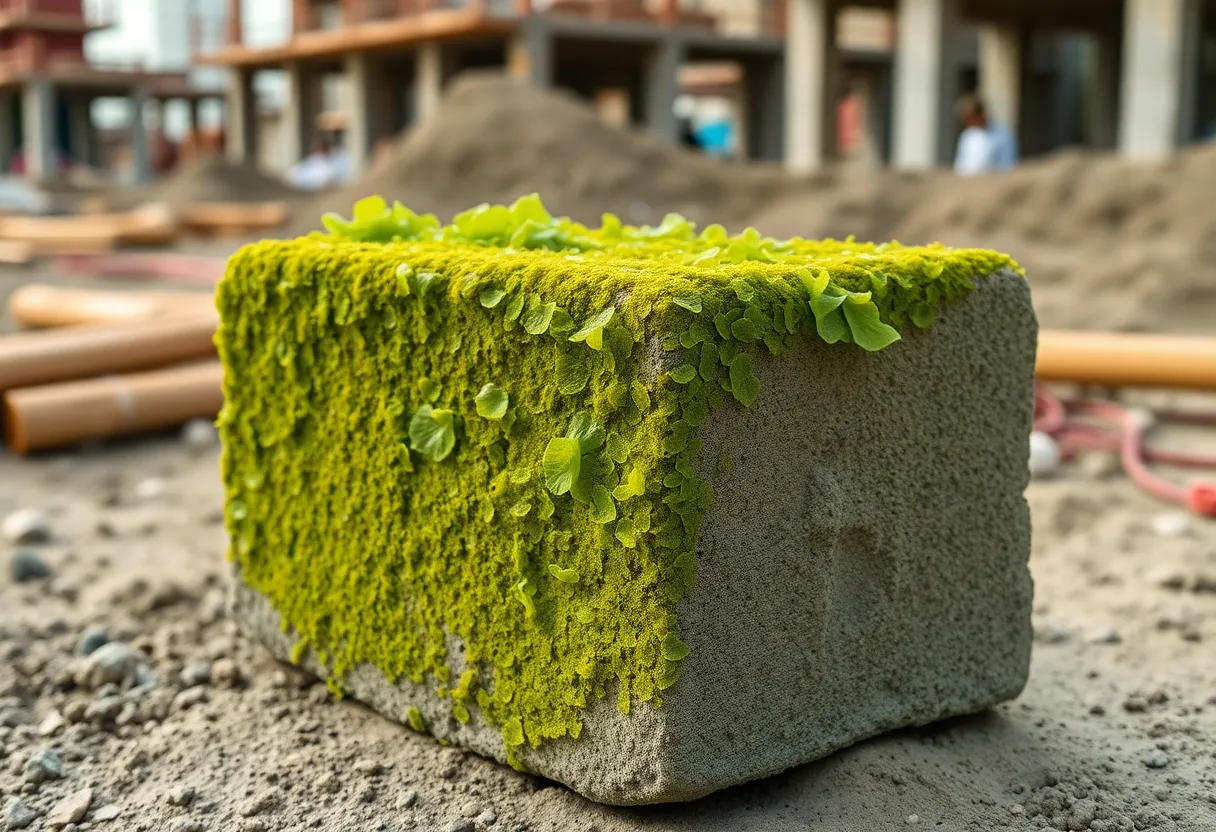News Summary
A new study from the University of Washington and Microsoft Research presents a pioneering method for creating more environmentally friendly concrete by incorporating green seaweed. This innovative approach has the potential to lower carbon emissions linked to cement by up to 21%. By using the macroalgae Ulva and a machine learning model for testing, researchers aim to transform traditional cement-making processes, contributing to a more sustainable future in construction and potentially aiding in the fight against climate change.
Seattle, WA – A groundbreaking study from the University of Washington and Microsoft Research reveals a novel method for making concrete more environmentally friendly by blending it with green seaweed. This innovative approach to concrete production could reduce carbon emissions associated with cement by up to 21%, significantly addressing a crucial environmental concern.
The research, published in the scientific journal Matter, aims to counteract the substantial carbon footprint of concrete, which is responsible for approximately 8-11% of global carbon emissions. Cement’s production is the primary contributor to this environmental issue, prompting scientists to seek alternative materials and processes that can reduce its impact. By integrating the sustainable macroalgae Ulva, known for its carbon-capturing capabilities during photosynthesis, the researchers have developed a more sustainable option for cement reinforcement.
Led by Eleftheria Roumeli, an assistant professor in materials science and engineering at the University of Washington, in collaboration with Kristen Severson, a principal researcher at Microsoft Research, the team has made significant strides in eco-friendly construction materials. Roumeli’s previous innovations include an algae-based plastic that biodegrades quickly, demonstrating her commitment to sustainable materials science.
To incorporate seaweed into cement, the research team dehydrated the Ulva, allowing for higher mixing quantities than prior attempts. This step marks a pivotal shift from conventional cement-making methods, which typically rely on fossil fuels and non-renewable resources. In addition, the researchers have devised a machine learning model that accelerates the testing process for concrete strength, predicting cement durability in a fraction of the time, leading to a reduction of experimental time by 112 days.
Concrete typically strengthens over time, necessitating a testing period of 28 days for strength evaluation. By using their machine learning innovation, the research team can assess the material’s performance far more efficiently, establishing a framework for the quick design of sustainable cement mixtures.
In their study, titled “Closed-loop optimization using machine learning for the accelerated design of sustainable cements incorporating algal biomatter,” the researchers are not only focusing on seaweed but also plan to develop guidelines that will assist other scientists in creating green cement mixtures rapidly. This approach could potentially lead to the use of local materials, further reducing the environmental impact of concrete production.
The importance of this research cannot be overstated, as construction remains a leading source of carbon emissions globally. Efforts currently underway to mitigate the industry’s environmental impact include utilizing clean energy in cement production and recycling industrial waste products like fly ash and furnace slag. However, incorporating seaweed could be a game changer, allowing for a more sustainable future in construction.
Additional contributors to the study included Meng-Yen Lin and Paul Grandgeorge, who played vital roles as graduate and post-doctoral researchers in Roumeli’s lab. Collectively, their work contributes to an emerging field focused on sustainable material innovation aimed at reducing global carbon emissions.
The innovations showcased in this study hold promise not only for the construction sector but also for broader applications as society increasingly seeks to combat the effects of climate change. As the world grapples with rising carbon footprints, the integration of seaweed in cement production could represent a significant step forward in sustainable practices.
Deeper Dive: News & Info About This Topic
HERE Resources
Additional Resources
- GeekWire: Concrete Goes Green
- Wikipedia: Cement
- LinkedIn: Amazon Gobbles Up UW Computer Science Grads
- Google Search: Seaweed Cements
- Abby News: Orcas Rub Each Other with Kelp
- Encyclopedia Britannica: Greenhouse Effect
- AP News: Crypto News
- Google News: Sustainable Construction
Author: STAFF HERE PHILADELPHIA WRITER
The PHILADELPHIA STAFF WRITER represents the experienced team at HEREPhiladelphia.com, your go-to source for actionable local news and information in Philadelphia, Philadelphia County, and beyond. Specializing in "news you can use," we cover essential topics like product reviews for personal and business needs, local business directories, politics, real estate trends, neighborhood insights, and state news affecting the area—with deep expertise drawn from years of dedicated reporting and strong community input, including local press releases and business updates. We deliver top reporting on high-value events such as Mummers Parade, Philadelphia Flower Show, and Thanksgiving Day Parade. Our coverage extends to key organizations like the Greater Philadelphia Chamber of Commerce and United Way of Greater Philadelphia, plus leading businesses in telecommunications, food services, and healthcare that power the local economy such as Comcast, Aramark, and Children's Hospital of Philadelphia. As part of the broader HERE network, we provide comprehensive, credible insights into Pennsylvania's dynamic landscape.





